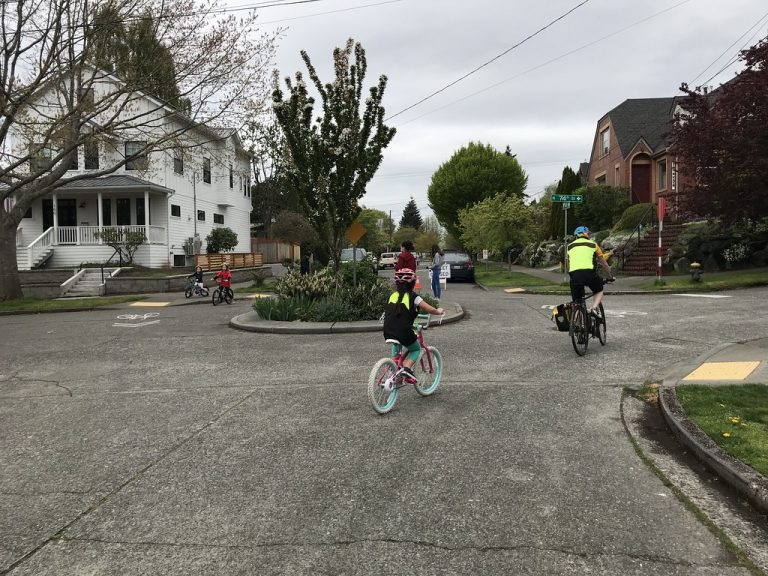Published on November 25, 2020

One morning in early April, at the height of the coronavirus pandemic’s first wave, Gordon Padelford watched one man with a pickup truck leaving “local access only” signs and traffic cones along 25th Avenue South in the Central District. A longtime advocate of pedestrian and cycling street access, Padelford held his breath: Would the low-budget infrastructure really work?
When the COVID-19 pandemic struck the U.S. this spring, Seattle was one of the first cities to explore what a drastic change in lifestyle meant for how we use streets, sidewalks and other public rights-of-way. As people’s lives narrowed from miles to meters, some looked at their immediate surroundings with new appreciation: We didn’t need to drive three hours to a mountain to find worthwhile nature, recreation or room to breathe. Meaningful adventures were just beyond our doorsteps, and there was as much value in maintaining the rooty sidewalk in front of our house as our favorite trail at Rainier.
These space-making efforts seem small, but they oppose nearly a century of car-centric urban design so ingrained that many accept it as a given. They also represent a shift in thinking that could help cities like Seattle hit aggressive targets to mitigate carbon emissions.
“There is a reckoning, a revisiting, of the purpose of this tremendous amount of public space in our midst to serve more than cars,” says Dr. Kathleen Wolf, a research social scientist in the School of Environmental and Forest Sciences at the University of Washington.
Continue reading at Crosscut.
Originally written by Hannah Weinberger for Crosscut.